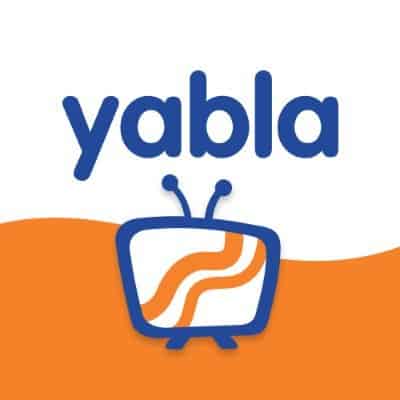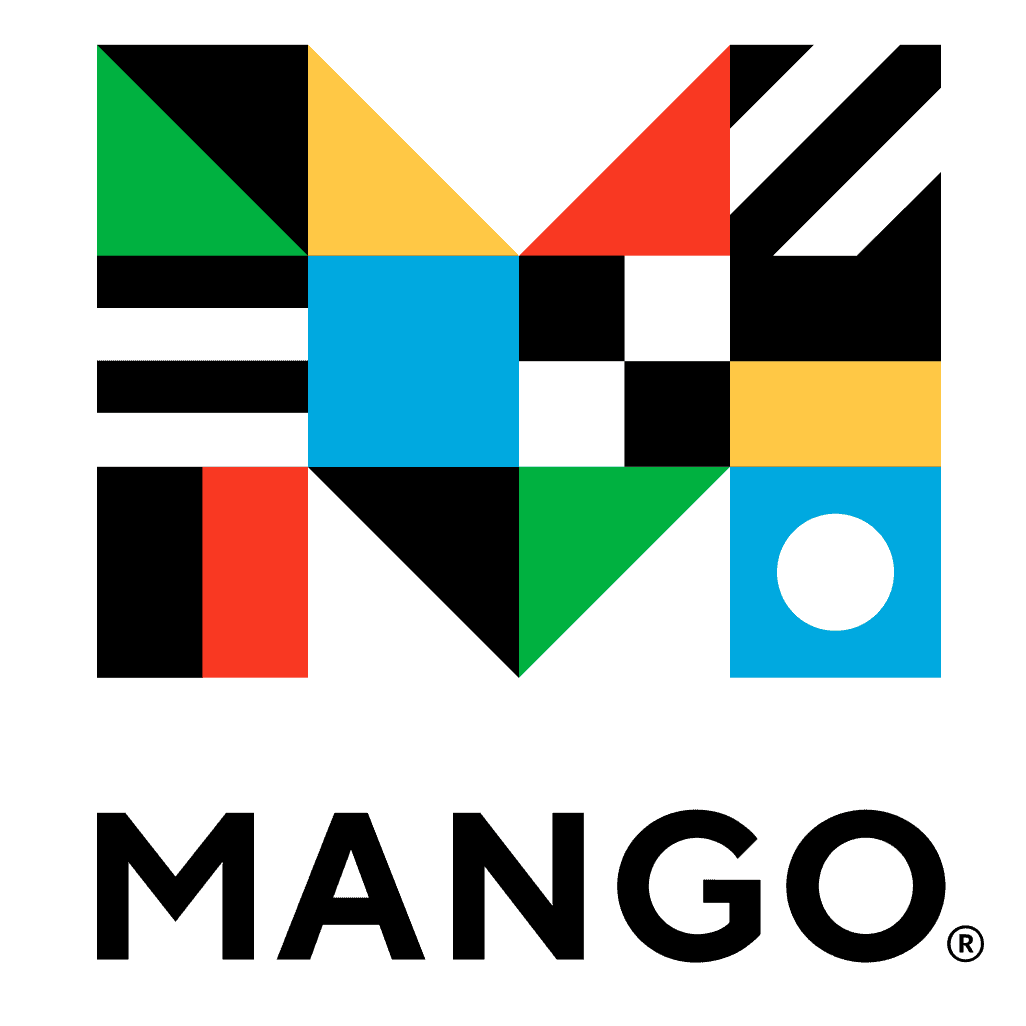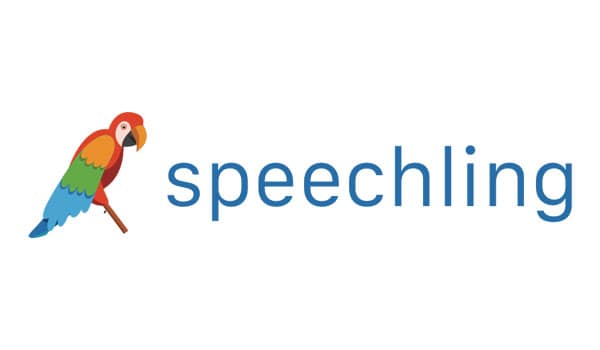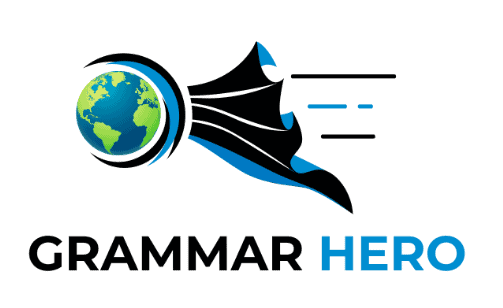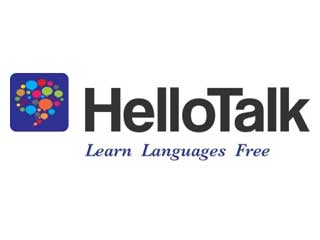According to the BBC, Italian is the language of art, food, music, poetry, fashion – and even love (Just don’t tell the French). It will take you from romantic Venice with its sun-dappled canals to fashionable Milan. You’ll walk the same paths as emperors in Rome and take in the incredible coastlines of Sardinia. You’ll make friends around the world, from Italian nonnas to Erasmus students and language lovers.
However, Italian isn’t just a beautiful language. Thanks to their shared Latin origins, it’s relatively similar to English. If you also speak some French, Spanish, Portuguese, Catalan, or Romanian, you’ll have a head start.
Even though Italian may be generally less challenging for English speakers compared to languages like Arabic or Korean, that doesn’t mean it’s a walk in the park. There’s still a lot to learn, from vocabulary, grammar, and Italian accent. And the right course will help you by teaching you Italian as well as making the process fun.
Although these sources aren’t considered Italian language schools with Italian language courses, we have compiled our top-rated Italian resources – and there’s so much to choose from. At All Language Resources, we’ve reviewed over 100 Italian resources. The courses that made it onto this list score at least 3.5 stars, which is above average on our website.
Additionally, these courses have plenty that set them apart. Whether you’re looking for a brief introduction, an intense course that throws you into the deep end, or a more innovative approach that doesn’t feel like you’re in the classroom. We’re confident that you’ll find the right course for you on this list. You should also check out our article on the best way to learn Italian for more ideas.
Table of Contents
Table of Best Courses to Learn Italian
Links below will send you to the course websites, and the course details are down below:
OVERALL BEST
Quality Audio Lessons That Never Feel Overwhelming: Pimsleur Italian
A Huge Amount of Lessons and Practice Activities: Ouino
Little-Known Yet Super Thorough Cutting-Edge Italian Program: Think in Italian
Extremely Thorough and Engaging Italian Video Courses: Italy Made Easy
Best Non-Beginner Video Course: Yabla
Best for Picking Your Own Class: Verbling
BEGINNER’S COURSES
Best Beginner Course With Engaging Stories: Italian Uncovered
Decent Instruction for Beginners: Mango Languages
READING AND LISTENING
Relaxed Podcast-Style Lessons With a Few Extra Features: Coffee Break
Heaps of Audio Courses by Different Teachers: Italianpod101
Beginner-Appropriate Audio Courses With Lots of Listening Practice: Bite Size Languages
Read Your Favorite Content: LingQ
Pricey but Serves a Purpose: Glossika
SPEAKING AND WRITING
Best For Speaking Italian From Day 1: Pimsleur Italian
Good for Intermediate Students Wanting to Practice Speaking: Glossika
Best For Improving Italian Pronunciation: Speechling
Train Your Pronunciation and Intonation: Ripeti Con Me
VOCABULARY ACQUISITION
A Story-Based Approach to Improving Intermediate-Level Grammar: Grammar Hero
Beginner-Level Lessons With Good Grammatical Explanations: Wlingua
Gamified Flashcards Plus a Host of Community-Made Courses: Memrise
TUTORS AND LANGUAGE EXCHANGES
Tutoring Help for a Range of Ability Levels: italki
Great Way to Find Tutors and Classes: Verbling
Best Way to Find Language Exchange Partners While Taking Its Audio Lessons: HelloTalk
Overall Best Italian Learning Courses
The courses in this category try to cover multiple areas of language learning and give learners a more comprehensive understanding of the Italian Language.
Quality Audio Lessons That Never Feel Overwhelming
Pimsleur is one of the most popular and longest-standing resources out there for learning a foreign language. Its Italian courses place a strong emphasis on aural and verbal communication skills that can be used right away.
Pros
- The lessons are structured well and are an appropriate length.
- There are both male and female native speakers.
- Lessons build on each other nicely.
- The platform is easy to navigate and visually appealing.
Cons
- There’s very little visual content.
- Lesson speed isn’t customizable.
See our Super-Detailed Pimsleur Italian Review
A Huge Amount of Lessons and Practice Activities
Ever finished a course and felt like there wasn’t really enough material? That’s unlikely to be the case with Ouino, which contains over 400 lessons, 1,200 exercises, and 60 short stories.
You can either follow their recommended learning path or pick the topics you want to study. This means it’s ideal for false beginners and pre-exam revision. There’s material up to the upper-intermediate level, although higher levels have less content.
You’ll study pronunciation, vocabulary, sentence structure, verb conjugation, natural dialogues, and more. The lessons can seem academic, with lots of explanation, repetitive exercises, and only a smattering of gamification. However, they’ve put plenty of thought into how to help you understand the material, with color-coding drawing your attention to gender, key vocabulary, and more. You can also choose between listening to the lessons or reading them.
Ouino might not be the most exciting of language courses. It’s more Ford Fiesta than Jaguar. Yet like the faithful Fiesta, it’s got plenty of mileage in it. You’ll be hard-pushed to run out of material with Ouino, and all the lessons are high quality.
Pros
- Huge amount of material
- Practical conversation practice
- Detailed pronunciation guide
- Can study the recommended pathway or pick and choose the lessons that interest you
- Good for visual and aural learners
Cons
- You have to download the software
- The exercises can be repetitive
- Absolute beginners may find the amount of content overwhelming
- No pronunciation feedback or voice recognition
Limited time offer. Lifetime Access is only $95.76!! You can get an additional language for 50% off, OR you could get all 5 languages for life for $191.52. You should know that Ouino enjoys one of the lowest product return rates in the industry. 🙂
See our Super-Detailed Ouino Review
Little-Known Yet Super Thorough Cutting-Edge Italian Program
Pros
- The natural approach to language learning, mimicking the way we naturally acquire languages.
- How the AI tutor personalizes conversations, making learning feel tailored and engaging.
- The ease of fitting the bite-sized readings into a busy schedule without losing the essence of immersion.
- The focus on Italian culture, names, and places, enriching the learning experience.
- The structured progression of lessons, where previous learnings are revisited in future lessons, reinforcing knowledge.
Cons
- Some may find the course lacks the gamified elements found in other language apps, which could be a motivator for certain learners.
- The lesson style is straightforward, with key concepts being learned through exposure rather than explicit teaching, which might be challenging for those who prefer more structured, traditional lessons.
Click our link to get 50% off on your first month
See our Super-Detailed Think in Italian (Ripeti Con Me) Review
Extremely Thorough and Engaging Italian Video Courses
Most courses benefit from being paired with supplementary resources, perhaps to expand your vocabulary or get more listening practice. Italy Made Easy, however, really could function as a one-stop resource for casual and serious students alike.
Many of the Italy Made Easy courses have over 150 video lessons, plus extensive drills and activities. You’ll study vocabulary, grammar, listening, reading, writing, speaking, pronunciation, and more. What’s more, if you opt for the VIP course, a native and trained speaker will check your assignments and give you personalized feedback.
The flip-side is that impatient learners looking to make quick progress might get frustrated. There are two beginner-level courses, meaning you’re looking at around 300 video lessons before you reach the intermediate level. And the teacher, Manu, while very likeable, is also very talkative. This is not a quick, lean, “learn Italian in 30 days” type of course. This source definitely has Italian comprehensible input if you are willing to take the time to follow the course.
However, if you’re looking for a solid Italian foundation that will cover all the main skills, Italy Made Easy is an excellent choice.
Pros
- Extremely thorough
- You’ll practice all language skills
- Experienced and personable teacher
- Can get feedback on your assignments
Cons
- Some of the videos could be edited down
- No material for advanced learners
See our Super-Detailed Italy Made Easy Review
Best Non-Beginner Video Course
Yabla is a language-learning platform that uses videos with interactive subtitles and language games to help users learn a language. It’s currently available on the web and for iOS, with an Android app in development. Its videos are of varying difficulty levels and types, and are either sourced from the internet or originally produced, but all videos use native speakers.
Pros
- It’s very affordable
- The review activities are enjoyable and varied
- You can filter content by region
- There are plenty of interesting and varied videos
Cons
- Audio in some review activities is robotic
- No speaking practice
- Translations don’t take context into account
See our Super-Detailed Yabla Review
Best for Picking Your Own Class
Verbling is an online language-class marketplace where you can take lessons with teachers of your choice. It has some student-friendly extra features, including a built-in online classroom, flashcards, homework calendar, and a filing system for lesson materials. There are also useful but disorganized forums where you can discuss languages, share writing for critique, and do free language drills and exercises.
The lessons are generally high quality and well structured, plus the filters make it easy to find teachers who specialize in everything from accent reduction to interview preparation.
Pros
- You can find great teachers very quickly
- The platform’s extra features, such as teacher-made, personalized flashcards, help you review the material learned in each lesson
- It seems focused on long-term progression as well as immediate student satisfaction
- You don’t have to give out your contact details, thanks to the classroom technology
Cons
- Some teachers don’t use the platform’s flashcards and materials system
- There are fewer languages available than on italki
- You can only pay in US dollars, plus there’s a hidden fee
- The forums need more moderation
See our Super-Detailed Verbling Review
Best Italian Beginner’s Courses
If you’re looking for courses that provide a good starting point for Italian, then these are our best beginner recommendations for you to try.
Best Beginner Course With Engaging Stories
StoryLeaning Italian Uncovered comes from Olly Richards, the creator of the super popular polyglot blog. It’s quite a bit different than most courses as it revolves around an engaging story. It can be a bit more challenging than other courses, as you begin reading somewhat long texts right off the bat. Overall, I found it to be a more fun way to approach language learning that will be great for some but not ideal for others.
Pros
- Immersive narrative structure
- Engaging Italian tutor
- Option to join online community
Cons
- No direct speaking software
- Pricier than some language courses
See our Super-Detailed Italian Uncovered Review
Decent Instruction for Beginners
There’s just something about Italian pronunciation, or more precisely, intonation. It doesn’t matter if you can’t speak a word of the language – you can immediately recognize it.
Learning how to reproduce that typical Italian way of speaking is easier said than done. But that’s where Mango Languages’ Italian course comes in.
At first glance, it seems very similar to Pimsleur, despite not being an audio course. The lessons begin with a dialogue, after which you’ll get grammar or cultural explanations and practice building your own sentences and questions. Bear in mind repetition is a key feature of this method.
A stand-out feature of Mango Languages, however, is the ability to record yourself speaking an Italian phrase and then lay it over a native speaker’s recording. Many courses allow you to record yourself, listen back, and even switch between your recording and a native speaker’s. Few, however, allow you to listen to both of them at the same time. And this immediately shows you where your cadence, stress, and pronunciation aren’t quite right.
Although there’s a lot to like about Mango Languages, it’s mainly focused on speaking and listening. For reading and writing practice, you’ll need to pair it with a different resource.
Pros
- It’s great for spotting unnatural pronunciation and intonation
- You’ll practice constructing your own sentences from the first lesson
- Lessons build on each other well
- Some North American libraries and universities offer free access
Cons
- Limited focus on writing and reading
- Some users find the heavy drilling monotonous
- Only caters for beginner and lower-intermediate learners
See our Super-Detailed Mango Languages Review
Courses to Learn Italian Reading and Listening
Improving your comprehension and listening skills to a level where you can understand Italian speech or text is one of the biggest challenges of learning the language. These courses are the best for improving these skills.
Relaxed Podcast-Style Lessons With a Few Extra Features
If studying Italian feels daunting, give Coffee Break Italian a listen. These relatively short, unintimidating lessons are bound to leave you more confident.
Coffee Break Italian is a freemium course. You can listen along to their free podcast as Katie learns Italian grammar, vocabulary, and culture from Francesca and Mark. Alternatively, you can opt for one of the premium courses: the standard Coffee Break Italian; Travel Diaries; Reading Club, where you get audio lessons alongside weekly texts; and more.
Most of the premium courses follow the same structure. You’ll get the ad-free podcast lessons along with access to lesson notes, a video version of the course, and a bonus audio lesson with additional vocabulary and translation exercises.
Pros
- Lots of free material
- Fun, interesting, and unintimidating
- Cultural insights
Cons
- Serious learners will need something more in depth
- No writing practice, and in most courses, no reading practice
See our Super-Detailed Coffee Break Review
Heaps of Audio Courses by Different Teachers
ItalianPod101 is the Netflix of Italian podcast lessons. It’s similar to other courses on this list, such as Language Transfer and Coffee Break Italian. But what sets it apart is just how many courses (called pathways) and lessons your subscription gives you access to.
Most lessons are focused on a dialogue that the hosts will break it down for you. You’ll get some listening practice (although a lot of the instruction is in English), as well as the new vocabulary and grammar breakdowns. Subscribers get access to expansion materials, lesson notes, and a wide range of other features – some more useful than others.
That said, absolute beginners will likely find the pathways too unstructured. They don’t always seem to build on each other, even when the lessons themselves are well structured.
There’s also a limited focus on reading and writing, while the cheaper plans don’t include any speaking practice. Although ItalianPod101 is a good choice for false beginners onwards, you’ll benefit from some extra resources or self-guided practice.
Pros
- Huge number of lessons with various hosts
- Premium subscribers get access to extra features, including topic-specific flashcard decks
- Voice recorder function
- Fairly decent for grammar
Cons
- Can feel unstructured
- Not ideal for absolute beginners
- Insufficient practice tasks
- Limited reading and writing practice
- Too much English, especially at higher levels
Save 25% on your subscription with the code ALLLANGUAGERESOURCES
See our Super-Detailed ItalianPod101 Review
Beginner-Appropriate Audio Courses With Lots of Listening Practice
Imagine going to an hour-long tarantella dance class and only spending a few minutes dancing. Well, some people would argue that this is a bit like taking Italian lessons in English.
There’s a lot of debate over whether languages should be taught in that same language or not. One thing’s for sure: learning Italian in Italian will give you a lot more exposure to the language, even though it will be more challenging.
Bite Size Languages’ courses are based on the idea that the more Italian you listen to, the better. They use comprehensible input, a language-learning technique that’s backed up by plenty of studies. The idea behind it is that listening to or reading interesting material that you can understand but is slightly above your level will help you learn Italian more naturally.
As such, in this course, you dive straight into short, Italian dialogues that are designed to introduce you to level-appropriate vocabulary and grammar. You can just listen to the dialogues, which Bite Size Languages believes would be sufficient. However, if all-Italian learning seems too much for you, or you would simply like some extra information, you can make use of additional English-language materials: transcripts, word-by-word translations, cultural tips, and concise grammar notes.
Pros
- Lots of listening practice
- The audio recordings slowly get faster
- Good audio quality
- Very limited use of English
Cons
- Grammar explanations may be too brief for some users
- No practice activities
Read Your Favorite Content
LingQ is a language-learning platform that focuses on extensive reading for over 30 different languages. You can import your own content or choose from the community library of books, articles, podcasts, YouTube videos, and more.
The app highlights unknown words across every lesson and makes them reviewable via different types of SRS flashcards. The more you read, the more accurately you will be able to identify content that is suitable for your level.
Although I did not find it beneficial for languages I had never studied before, I think LingQ can be helpful for upper-beginner to advanced language learners who enjoy reading. It is especially helpful if you struggle to find graded readers in your target language.
Pros
- Easily import almost any material you want to study
- Use SRS flashcards to quiz new words from a specific page
- Each lesson in the library displays the percentage of known and unknown words based on reading history
- There are many dictionaries to choose from for definitions
Cons
- Reviewing words is chaotic
- The extra features are overpriced and can be found other places for cheaper
- Very little of the content is original. Much of it was uploaded by users from other places
- The free version is extremely limited
See our Super-Detailed LingQ Review
Pricey but Serves a Purpose
Glossika uses audio drills to start out every language (and they offer a lot). With a similar format for every language, this might be a good option if you’re learning more than one language at the same time. Audio lessons cover speaking, listening, and comprehension, so it’s a useful tool for upper-beginner or lower-intermediate learners.
You’ll probably notice a lack of cultural information with Glossika. Of course, the tradeoff is decent instruction with a consistent format that helps if you’re trying to learn multiple languages.
Pros
- Only pay once—when you subscribe, you get every language Glossika offers
- There’s a lot of audio material across tons of languages
- The format is repetitive, in a good way
Cons
- Pricing is steep for what you get
- It’s common to find errors in the courses
- The interface isn’t anything exceptional
See our Super-Detailed Glossika Review
Courses With Italian Speaking and Writing Emphasis
Working on your productive language skills is important for you to reach fluency. The courses below give you ample practice to help you improve these skills.
Best for Speaking Italian From Day 1
Pimsleur is one of the most popular and longest-standing resources out there for learning a foreign language. Its Italian courses place a strong emphasis on aural and verbal communication skills that can be used right away.
Pros
- The lessons are structured well and are an appropriate length.
- There are both male and female native speakers.
- Lessons build on each other nicely.
- The platform is easy to navigate and visually appealing.
Cons
- There’s very little visual content.
- Lesson speed isn’t customizable.
See our Super-Detailed Pimsleur Italian Review
Good for Intermediate Students Wanting to Practice Speaking
Glossika uses audio drills to start out every language (and they offer a lot). With a similar format for every language, this might be a good option if you’re learning more than one language at the same time. Audio lessons cover speaking, listening, and comprehension, so it’s a useful tool for upper-beginner or lower-intermediate learners.
You’ll probably notice a lack of cultural information with Glossika. Of course, the tradeoff is decent instruction with a consistent format that helps if you’re trying to learn multiple languages.
Pros
- Only pay once—when you subscribe, you get every language Glossika offers
- There’s a lot of audio material across tons of languages
- The format is repetitive, in a good way
Cons
- Pricing is steep for what you get
- It’s common to find errors in the courses
- The interface isn’t anything exceptional
See our Super-Detailed Glossika Review
Best For Improving Italian Pronunciation
Speechling is a website and app that makes it easy to improve your speaking skills in several languages. The free version is an incredbily valuable resource that makes it easy to practice mimicking native speakers. The Unlimited Plan provides unlimited corrections of your recordings by a teacher.
Pros
- An excellent method to improve your speaking abilities and get feedback from a real teacher
- Answer the Question, Describe the Image, and Freestyle mode are great for higher levels
- You can switch languages at any time. I like seeing translations in my second language while studying my third language
- Truly unlimited recordings with quick feedback
Cons
- Absolute Beginners should learn the basics elsewhere first
- You’ll need to learn how to make the sounds of your target language on your own
- The amount of time given to record sentences can be too short
See our Super-Detailed Speechling Review
Train Your Pronunciation and Intonation
Sounding like an Italian: it’s the ultimate goal, but how are you going to achieve it if your gni still sounds wrong? And let’s not forget the easy mistake of trying to compliment a bald man on his hat (cappelli) but accidentally complimenting his non-existent hair (capelli) instead.
That’s where Ripeti Con Me comes into play. In each 30-minute lesson, you’ll first listen to Italian phrases and then practice shadowing them. This means you’re expected to say them at the same time as the native Italian speaker. You should also pick up some vocabulary and grammar as you move through the material, plus there are free grammar lessons. However, these aren’t the course’s priority.
Unfortunately, Ripeti Con Me doesn’t give you any pronunciation feedback or breakdowns. Nor do you listen to recordings of yourself speaking. As such, you’ll probably still benefit from classes with an Italian teacher who can let you know if you’re making any errors.
Still, few other courses have such a strong focus on helping you perfect your Italian accent as Ripeti Con Me.
Pros
- Improve your pronunciation and intonation
- Lots of listening and scripted speaking practice
- Free grammar lessons
Cons
- No pronunciation feedback or explanations
- Can be dull and boring
- Limited reading and writing practice
- Not a stand-alone course
Save 10% on your subscription with the code ALRRCM
See our Super-Detailed Think in Italian (Ripeti Con Me) Review
Learn Italian Vocabulary and Grammar
Learning new vocabulary and grammar is key to learning Italian. These courses will help you learn more vocabulary and how to use them. They’ll also help you understand Italian grammar better.
A Story-Based Approach to Improving Intermediate-Level Grammar
For many people, there’s nothing duller than grammar. Studying sentence structure and conjugation tables just seems dry and dreary – not to mention difficult! – compared to speaking practice, pronunciation drills, role plays, and other more communication-focused study methods.
If you found yourself agreeing with that description, then Grammar Hero might be the course you need. It teaches you intermediate-level grammar through the lens of original short stories, so that you can not only have fun but also immediately see the grammar in context – and hopefully, understand and remember it more intuitively.
First, you read and listen to the story as many times as you need. Then, you’re presented with a grammar breakdown and examples so that you can understand the grammar. However, you’re not encouraged to actively memorize this. That’s supposed to happen gradually through the next two stages. You’ll first get more exposure to the grammar point (re-reading the text), and then you’ll practice it (a series of activities including spotting errors, writing compositions, translation, and fill-in-the-blank exercises).
Grammar Hero is pricier than most grammar courses, but we also think it’s more fun, engaging, and arguably effective than a lot of them. Whether or not it’s worth it depends on you and your preferred learning style.
Oh, and if you’re looking for something like Grammar Hero, but targeted at beginners or focused on more than just grammar, check out Italian Uncovered (review) from the same brand.
Pros
- Engaging stories that are different for every language
- Good-quality audio
- Focuses on the grammar points that you’re most likely to struggle with
Cons
- You can study the same grammar topics with other courses for much less – although you might enjoy Grammar Hero more
- The exercises are pretty standard
- You won’t get any feedback on your writing composition
See our Super-Detailed Grammar Hero Review
Beginner-Level Lessons With Good Grammatical Explanations
Wishing your language apps had more thorough grammatical explanations? You might like Wlingua.
The short-and-sweet lessons might remind you of Duolingo and other gamified apps, but there’s an above-average focus on grammar. Nearly all the lessons are focused around a single grammatical point, whether it’s irregular verbs or the articulated preposition.
What’s more, the grammatical explanations are far better than in most language apps (with the potential exception of LingoDeer) and color-coding is used to help you recognize patterns. You’ll also drill grammar with questions that ask you, for example, to identify the correct noun gender.
Wlingua also introduces you to plenty of vocabulary, but you might find yourself overwhelmed with it. There are limited vocabulary-related drilling activities, and you’ll often be introduced to a dozen words in a row. Although later lessons use the same vocabulary, it’s a challenging start to the course.
Pros
- Well-structured course that builds on previous lessons
- Good grammar explanations
Cons
- Lots to remember
- Mostly drills recognition rather than recall
- Reading tasks don’t test your comprehension
Gamified Flashcards Plus a Host of Community-Made Courses
Memrise is often considered a Duolingo alternative, but you’ll quickly spot the differences between them. And no, we’re not just talking about Memrise’s flower pots versus Duolingo’s lime-green owl.
Both apps use gamification to teach you a smattering of Italian in just five minutes a day. Memrise, however, is primarily a flashcard app. You’ll add mnemonics to help you remember words, and there are several handy review activities. Some courses also have videos featuring native speakers. Grammar exercises, however, are often minimal.
In addition to the official Italian courses, there are also free, community-made ones. These touch on idioms, pronunciation, TV shows, grammar, and much more. They’re a great way to learn more specialized vocabulary. In fact, if there’s a topic you’d like to study, you can easily create your own course out of a vocabulary list.
Memrise isn’t the perfect course. However, it’s an engaging way to drill essential Italian phrases and vocabulary in just a few minutes a day. You could pair it with just about any of the courses on this list, and you would see the benefits.
Pros
- Good for memorizing essential phrases and vocabulary
- Lots of community-made courses
- Variety of review activities
- Videos featuring a variety of native speakers
Cons
- Not all features are available on the web app
- Not as thorough as some courses
- Best used as a supplementary resource
See our Super-Detailed Memrise Review
Tutors and Italian Language Exchange
Do you prefer learning Italian using a more immersive method? Then language exchange is the option for you. These courses will connect you to an Italian tutor or a language exchange partner to help you practice your Italian language skills.
Tutoring Help for a Range of Ability Levels
Sometimes working with an instructor one on one is the best way to get quality language instruction. italki offers that, and more. You can connect with teachers or tutors at a range of price points and find someone who fits your learning style. Teachers have professional experience, and tutors are usually native or advanced speakers.
italki is convenient and accessible to all ability levels. You can find a Hebrew tutor who works with you on specific vocabulary or skills, too. And if you find someone you really click with, you can stick with them as you advance.
Pros
- Scheduling is convenient because you choose what time works for you
- The Language Partners Board is an excellent tool for checking your Hebrew (and helping others)
- You can usually take trial lessons for a lower price to see if an instructor is a good fit
Cons
- Pricing can be confusing because italki uses “credits,” not cash
- Popular teachers’ schedules can get booked up, so last-minute sessions aren’t always possible
See our Super-Detailed italki Review
Great Way to Find Tutors and Classes
Verbling is an online language-class marketplace where you can take lessons with teachers of your choice. It has some student-friendly extra features, including a built-in online classroom, flashcards, homework calendar, and a filing system for lesson materials. There are also useful but disorganized forums where you can discuss languages, share writing for critique, and do free language drills and exercises.
The lessons are generally high quality and well structured, plus the filters make it easy to find teachers who specialize in everything from accent reduction to interview preparation.
Pros
- You can find great teachers very quickly
- The platform’s extra features, such as teacher-made, personalized flashcards, help you review the material learned in each lesson
- It seems focused on long-term progression as well as immediate student satisfaction
- You don’t have to give out your contact details, thanks to the classroom technology
Cons
- Some teachers don’t use the platform’s flashcards and materials system
- There are fewer languages available than on italki
- You can only pay in US dollars, plus there’s a hidden fee
- The forums need more moderation
See our Super-Detailed Verbling Review
Best Way to Find Language Exchange Partners While Taking Its Audio Lessons
HelloTalk is a mobile app for language learners interested in language exchange. It facilitates communication between native speakers and those learning their language with the use of built-in language tools. It also offers audio lessons in 10 languages as part of a separate subscription.
Pros
- It’s exciting to practice communicating with real people
- The built-in language tools are helpful
- It’s easy to pick up and put down whenever you like
Cons
- It’s too easy to rely on google translate
- It can be hard to find good partners
- The paid audio lessons probably aren’t worth it
See our Super-Detailed HelloTalk Review
Maybe Try These Italian Learning Courses
These didn’t make it to our favorites for one reason or another but they each have their own strengths and are worth checking out.
Udemy
Udemy has courses from diverse instructors and on a range of topics in Italian. The courses range from about 40 minutes to over ten hours long, so you can choose the format and instructor that works for you.
Most courses come with downloadable study guides and other materials—and you get lifetime access once you buy the lesson. The audio is great since these are video-based lessons. Still, if you want to focus on writing, you’ll have to search around for courses with additional materials/homework.
Assimil
There’s a school of language learners that believes you should study languages like children do, with a focus on learning through exposure instead of memorizing conjugation tables. And that’s the theory behind the Assimil method.
With this e-course, you’ll learn just like a child does: by hearing native Italian speakers talk and then copying them. In fact, you won’t begin speaking and actively learning about grammar and sentence structure until lesson 50. Until that point, you’ll just be listening and doing comprehension exercises.
Assimil is a language-learning powerhouse that’s been publishing textbooks and now e-courses for almost a century. It has some passionate advocates who believe the Assimil method, while slow to get started, helps them achieve conversational fluency
See our Super-Detailed Assimil Review
Lingodeer
This cute, entertaining course is designed to take you from complete beginner up to B1 (lower intermediate) Italian. It’s one of our top picks for gamified apps, although serious learners will probably find it’s not enough on its own.
Each tea-break-sized lesson introduces you to a grammar point and some vocabulary. You’ll drill it by matching the phrase to the right picture, writing sentences, answering multiple-choice quizzes, identifying the extraneous word, and more. Units finish with listening comprehension and speaking exercises, although there’s no feedback on the latter. There’s also a good explanation of the target grammar or language at the start of the unit (just swipe to the left).
See our Super-Detailed Lingodeer Review
Fluenz
There’s something about Fluenz that feels old-fashioned, but that’s not a bad thing. It doesn’t have Duolingo-style gamification. You can choose to download the Fluenz software onto your computer. And the detailed video tutorials combined with a wide range of practice activities almost make you feel like you’re back at school.
Fluenz is also more well-rounded than the average course. It will train you on vocabulary, grammar, speaking, writing (including spelling!), reading, and listening. What’s more, the lessons are well-structured and build on each other. You’ll role play dialogues, work on dictation, and more. For dedicated students, there’s little to dislike.
See our Super-Detailed Fluenz Review
Language Transfer
Some courses start you off with memorizing important phrases, like “How are you?” and the ironic “I speak Italian.” Language Transfer couldn’t be more different.
The short-and-sweet lessons are set up so that you listen in on conversations between Mihalis and his students. As you do so, you’ll learn how Italian works so you can quickly make your own sentences, expand your vocabulary, and more. It’s relaxed and entertaining, and yet you learn a surprising amount of useful content.
See our Super-Detailed Language Transfer Review
News in Slow Italian
Don’t let the name mislead you: News in Slow Italian is about much more than just the news. Your subscription to News in Slow Italian gives you access to a slew of materials: a complete beginners course (G.U.T.S.), a grammar course, an expressions course, news-based podcasts and transcripts for intermediate and advanced learners, and stories (fictional and factual) for all levels.
Most of them have the same structure. You’ll begin with an audio recording and transcript, which contains pop-up translations. Most of the courses then have vocabulary flashcards, grammar lessons, pronunciation practice, and quizzes. However, the news-based podcasts have just the pronunciation practice, while the expressions course and the stories don’t have any additional materials. It’s best to treat these as add-ons that offer some extra listening practice and natural phrasing.
See our Super-Detailed News in Slow Italian Review
Rosetta Stone Italian
A Rosetta Stone Italian course could be most suitable for learners that don’t mind repetitive exercises and prefer to learn from pictures and context rather than translations and explanations. It’s probably not a good option for anyone wanting to significantly improve their speaking or writing skills, or those looking for an engaging course.
ALR Readers Exclusive Holiday Deal!! Get the Lifetime Subscription for 25 languages for $179 (everywhere else it’s $199 right now!). See details on the website.
See our Super-Detailed Rosetta Stone Italian Review
Best Free(mium) Courses for Learning Italian
Are you looking for a budget friendly app to learn Italian? We have few free and freemium courses that we recommend.
Comprehensive but Dated Textbooks and Audio Files
In the 1960s, when US diplomats were assigned a role in Italy, they would first attend intensive language classes provided by the US Foreign Service Institute’s School of Language Classes. Fast-forward to the 2020s, and most of the textbooks files are in the public domain. They’ve been scanned and converted into PDF and audio files, and hosted on numerous websites.
These textbooks are generally comprehensive and well-structured, with a heavy focus on polite, effective communication. (In fact, the first 200 pages of the Italian Programmed textbook is devoted solely to pronunciation and intonation.) If you’re not in a position to pay for a course, they are some of the most in-depth options available to you.
However, they do have their downsides. The files are hard to read and use, with old-fashioned fonts and tables of content that don’t correspond to the page number assigned by your PDF reader.
They are also dated, with the most recent published in the early ‘90s and the rest being even older. You won’t learn words like sito di social networking or spoilerare. Social attitudes and cultural examples at times seem antiquated – right down to the assumption that students are male.
If you opt for these courses, make sure to use them alongside other resources so you can get speaking practice and learn up-to-date vocabulary. The ‘60s may have been iconic, but you don’t want to sound like you’ve walked straight off the set of Mad Men.
Pros
- Free
- Comprehensive
- Strong focus on intonation and pronunciation
- Well-suited to more academic learners
Cons
- Dated
- The scanned materials can be hard to read
- Only in PDF format
Italian-Only Courses for Beginners Through to Advanced Learners
Put your conjugation tables aside: One World Italiano places conversational Italian and listening comprehension at the forefront of their courses.
That’s not to say you won’t study tenses and the subjective mood. It’s just not the main attraction of One World Italiano’s courses. The lessons contain dialogues, vocabulary lists, grammar explanations, quizzes, dictation exercises, and more. There are also plenty of practice activities focused on vocabulary, listening comprehension, and more.
One World Italiano’s courses can feel disorganized, and you’ll want to supplement them with additional speaking, reading, and writing practice. However, they’re a decent option for extra practice activities.
Pros
- Fair amount of practice activities
- Teaches new language in context
- Listening practice
Cons
- Not suited to complete beginners as the courses are entirely in Italian
- Vocabulary lists are poorly presented
- Limited speaking, reading, and writing practice
A Variety of University Courses
Studying with edX is a bit like ordering from a menu you don’t fully understand. You might get something delicious, or you might find you can’t stomach what’s on your plate.
You’ll find language courses for beginner through to advanced students from various universities on edX. And if you’ve mastered all those, you can even study courses in Italian about other topics, such as Italy’s numerous dialects, Italian history, and marketing.
The content, quality, teaching style, and price will vary, so it can be hard to know whether a course is a good use of your time beforehand. However, they tend to be freemium, so it’s easy to sample them before committing.
Pros
- University courses
- Huge range of courses
Cons
- Quality can vary
- Often no feedback or corrections
Gamification Galore in This 5-Minutes-a-Day Course
Few language courses have achieved as much fame or notoriety as Duolingo. Some love it. Others hate it. But one thing’s for sure: it has transformed our attitudes toward language acquisition.
While there are plenty of Duolingo-esque apps on the market today, when it first launched, it was groundbreaking because of its short, gamified lessons with almost zero grammar explanations.
Duolingo’s heavy gamification makes it addictive. Many learners find themselves using it every single day for months or even years on end, just so that they can maintain their learning streaks. Then there are the levels, points, bonus topics, certificates, golden skills… Self-studying normally relies on internal motivation, i.e. your discipline. But with Duolingo, there’s plenty of external motivation to keep you studying – even if you’re not really in the mood to study “sports” or “business”.
However, there’s a limit to how much you can learn in these miniscule study sessions, while the explanations can be insufficient for a thorough understanding of the grammar. The course is based on translation, with limited speaking, reading, and listening practice. There are also complaints that the Italian course is error-prone and in need of an update.
Duolingo won’t get you fluent in Italian. However, you will likely have fun, alongside learning Duolingo-isms like “I would like some new software for my brain” and “Children, why are you bleeding?” Alternatively, for a well-structured gamified app with good explanations, take a look at LingoDeer (review). Or, for something more in depth, try Italian Uncovered (review) or Coffee Break Italian (review).
Pros
- Fun and motivating
- Good for beginner-level vocabulary
- Unintimidating
- Community forums and events
Cons
- Grammar explanations are minimal and often insufficient
- Focused on translation rather than thinking in Italian
- Limited reading, writing, and speaking practice
See our Super-Detailed Duolingo Review
Most Useful Free Flashcard Vocab Builder
It is the go-to app for free (except on iOS) Spaced Repetition System (SRS) flashcards. It has a simple user interface with various features that more hard-core users can dive into if they choose. Your flashcards will appear according to your natural forgetting curve; the app will test you in increasingly spaced out intervals, with more difficult cards appearing more than once in a session, while easier cards spacing out over weeks — or even months and years.
An SRS system is the most effective way to drive information into your long-term memory. The cards can sync between the web, desktop app, and mobile versions to keep your flashcards updated and with you at all times. You can add images and audio clips to your cards and change the text formatting (if you use it on your computer).
One feature unique to Anki, as opposed to other SRS flashcard apps, is the “Cloze deletion” function, which allows you to block out parts of your card and create a “fill-in-the-blanks” type card format. If you want a resource for how to make effective flashcards, check out the book, FluentForever. The author leaves a whole section dedicated to understanding how to use your Anki deck to advance your skills quickly.
Pros
- Offers a wide range of features
- Allows synching across multiple devices
Cons
- Anki’s interface may be a bit intimidating for beginners
- The aesthetic isn’t very appealing
See our Super-Detailed Anki Review
So, What is the Best Course for YOU to Learn Italian?
There are many courses available to help you learn Italian. You may not use all of them to learn Italian, but you should still find one that’s most preferable. If you need a little more help narrowing down your options, take a look at this post to get a better understanding of what makes a good Italian program.
It’s also recommended to explore additional methods to learn and get a more well-rounded learning experience. For more options, check out our list of best podcasts for studying Italian, the best online apps, and our favorite YouTube channels for learning the language.
Whichever skill you want to improve, there’s definitely a course to help. You just need to try out a few and see what you like!






